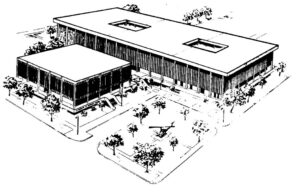CORRESPONDENCE COURSE OF
THE U.S. ARMY MEDICAL DEPARTMENT CENTER AND SCHOOL
SUBCOURSE MD0806 EDITION 200
INTRODUCTION

Drugs that act upon the respiratory system, cardiovascular system, or urinary system are frequently dispensed in both military and civilian pharmacies. This is because conditions that affect these systems (that is, hypertension affecting the cardiovascular system) affect many people. Consequently, it is imperative that you have an understanding of these systems and the drugs that act on them.
As with MD0804 (Therapeutics I) and MD0805 (Therapeutics II), anatomy, physiology, and pharmacology are presented in a combined perspective. This is done to help you to understand and remember the actions, uses, side effects, and patient warnings associated with the drugs included in these lessons.
You should remember that this subcourse is not intended to replace accepted references in anatomy, physiology, or pharmacology. Instead, it is designed to help you gain a background in these areas so that you may continue learning in a self-directed manner. You are encouraged to read pertinent journals, study pharmacology texts, and talk to fellow health-care professionals in order to learn more about the topics presented in this subcourse.
Subcourse Components:
This subcourse consists of 10 lessons as follows:
Lesson 1. The Respiratory System and Respiratory System Drugs.
Lesson 2. The Human Cardiovascular and Lymphatic Systems.
Lesson 3. Cardiac Drugs.
Lesson 4. Vasodilator Drugs.
Lesson 5. Drugs Acting on the Hematopoietic System.
Lesson 6. The Human Urogenital Systems.
Lesson 7. Antihypertensive Drugs.
Lesson 8. Diuretic and Antidiuretic Agents.
Lesson 9. Toxicology and Poison Control.
–Complete the subcourse lesson by lesson. After completing each lesson, work the exercises at the end of the lesson
–After completing each set of lesson exercises, compare your answers with those on the solution sheet that follows the exercises. If you have answered an exercise incorrectly, check the reference cited after the answer on the solution sheet to determine why your response was not the correct one.
———————-
Download Here
Therapeutics III
Length: 169 Pages
Estimated Hours to Complete: 14
Format: PDF file
Size: 2 MB
—————————-
Anyone may take this course. However, to receive credit hours, you must be officially enrolled and complete an examination furnished by the Nonresident Instruction Branch at Fort Sam Houston, Texas. Enrollment is normally limited to Department of Defense personnel. Others may apply for enrollment, but acceptance is not guaranteed.
—————————-
TABLE OF CONTENTS
INTRODUCTION
1 THE RESPIRATORY SYSTEM AND RESPIRATORY SYSTEM
DRUGS
Section I. The Respiratory System
Section II. Breathing and Breathing Mechanisms in Humans
Section III. Conditions Affecting the Respiratory System
Section IV. Respiratory System Drugs
Exercises
2 THE HUMAN CARDIOVASCULAR AND LYMPHATIC SYSTEMS
Section I. Introduction
Section II. The Human Cardiovascular System
Section III. The Heart and the Systemic Circulation of Blood
Section IV. The Human Lymphatic System
Exercises
3 CARDIAC DRUGS
Section I. Congestive Heart Failure and Its Treatment
Section II. The Antiarrhythmic Agents
Section III. Antihyperlipidemics Agents
Exercises
4 VASODILATOR DRUGS
Section I. Introduction
Section II. Vasodilator Drugs
Exercises
5 DRUGS ACTING ON THE HEMATOPOIETIC SYSTEM
Section I. Introduction
Section II. Coagulants
Section III. Anticoagulants
Section IV. Hematinics
Section V. Stimulating Factors
Exercises
6 THE HUMAN UROGENITAL SYSTEMS
Section I. Overview of the Urogenital Systems
Section II. The Human Urinary System
Section III. Introduction to Human Genital (Reproductive)Systems
Section IV. The Human Female Genital (Reproductive) System
Section V. The Human Male Genital (Reproductive) System
Exercises
7 ANTIHYPERTENSIVE AGENTS
Section I. Introduction to Hypertension
Section II. Drugs Used in the Treatment of Hypertension
Exercises
8 DIURETIC AND ANTIDIURETIC AGENTS
Section I. Diuretics Agents
Section II. Antidiuretic Agents
Exercises
9 TOXICOLOGY AND POISON CONTROL
Section I. Introduction
Section II. The Pharmacy and Poison Prevention
Section III. The Treatment of Poisoning
Section IV. Poison Control and Information
Exercises
ANNEX: Drug Pronunciation Guide
—————————-
Sample
LESSON ASSIGNMENT
LESSON 1 The Respiratory System and Respiratory System
Drugs.
LESSON ASSIGNMENT Paragraphs 1-1–1-20.
LESSON OBJECTIVES After you finish this lesson you should be able to:
1-1. Given a group of statements and one of the following terms: respiration, external respiration, or internal respiration, select the statement which best defines the given term.
1-2. Given a diagram of the human respiratory system and a list of names of the parts of the human respiratory system, match the name of its part with its proper location.
1-3. Given the name of one of the components of the human respiratory system and a group of statements, select the statement that best describes that component or its function.
1-4. From a group of statements, select the statement which best describes either costal (thoracic) or diaphragmatic (abdominal)
breathing.
1-5. Given the name of a condition affecting the respiratory system and a group of statements, select the statement that best describes the given condition.
1-6. Given the name of a type of respiratory system drug (that is, antitussive agent) and a group of statements, select the statement that best describes that type of agent.
1-7. Given the trade or generic name of a respiratory system drug and a group of indications, uses, side effects, or patient precautionary statements, select the indication(s), use(s), side effect(s), or patient precautionary statement(s) for the given
drug name.
1-8. Given the trade or generic name of a respiratory system drug and a group of trade and/or generic names, select the given drug’s corresponding trade or generic name.
SUGGESTION After studying the assignment, complete the exercises at the end of this lesson. These exercises will help you
to achieve the lesson objectives.
—————————-
Download Here
Therapeutics III
